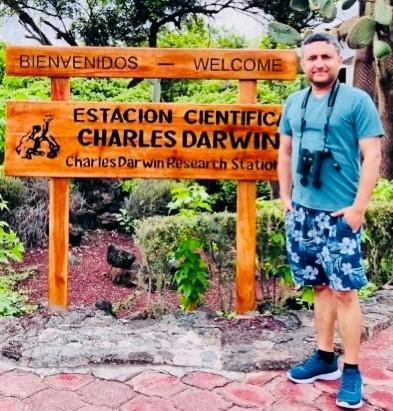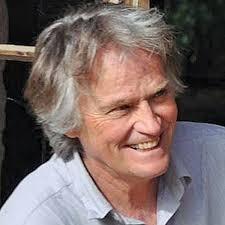
Bio:
Dr. Sangeet Lamichhaney's career has spanned various academic institutions and research topics. After earning his bachelor’s degree in veterinary medicine from Nepal, he completed an Erasmus Mundus Master's program in Molecular Genetics & Bioinformatics in Sweden. His doctoral work at Uppsala University in Sweden under Prof. Leif Andersson focused on the genetics of adaptation in natural populations, studying birds and fish. This work laid the foundation for his future research in adaptive evolution. Following his PhD, Lamichhaney joined Prof. Scott Edwards' lab at Harvard University as a Wenner-Gren research fellow. In 2019, he became an Assistant Professor at Kent State University, where his current research focuses on the genetic basis of adaptation to changing environments, with a particular emphasis on understanding how species evolve in response to environmental stressors. A major highlight of his work is his research in the Galápagos Islands, where he studied Darwin’s finches and their genetic adaptations to diverse food sources, climates, and other ecological factors. By integrating genomic data, he identified key genetic changes in traits such as beak morphology and diet, which are essential to their survival and speciation. Dr. Lamichhaney's research has been published in top-tier journals like Nature and Science and has been featured in prominent media outlets such as the BBC, The New York Times, and National Geographic. He has received several awards, including the Young Investigator Award for Evolutionary Studies and the Hwasser Prize.
Abstract:
Island ecosystems serve as natural laboratories for understanding the molecular mechanisms underlying key evolutionary processes such as adaptive evolution, speciation, and biological invasion. Darwin’s finches, inhabiting the Galápagos Islands, represent one of the most iconic systems for studying these evolutionary processes. As a part of our long-term research in the Galápagos Islands, we have conducted population-scale whole-genome re-sequencing for > 400 individuals of Darwin’s finches and have identified two major genetic mechanisms key to their evolution (1) Two transcription factors, ALX1 and HMGA2, affecting craniofacial development, have driven beak diversification, enabling the finches to utilize a broader range of food resources (2) Extensive interspecific gene flow has been critical in maintaining genetic diversity both within and between species, including a documented case of rapid hybrid speciation. Furthermore, recently, the invasive avian vampire fly (Philornis downsi) has become one of the greatest threats to the Darwin’s finches in Galápagos, that parasitizes their chicks and cause high mortality. We have generated a high-quality reference genome and conducted population-scale whole-genome re-sequencing of P. downsi populations from the Galápagos Islands and mainland Ecuador. Our findings have revealed reduced genetic diversity in Galápagos (indicative of a recent bottleneck), ongoing gene flow among island populations, and positive selection in genes involved in neural signaling, muscle development, and metabolism, traits that have likely facilitated the fly’s successful invasion in Galápagos. Our study offers a framework for investigating the genetic mechanisms underlying species colonization, local adaptation, and dynamics of invasive species within island ecosystems.
Watch the seminar here!
 Dr. Denis Walsh
Dr. Denis Walsh
